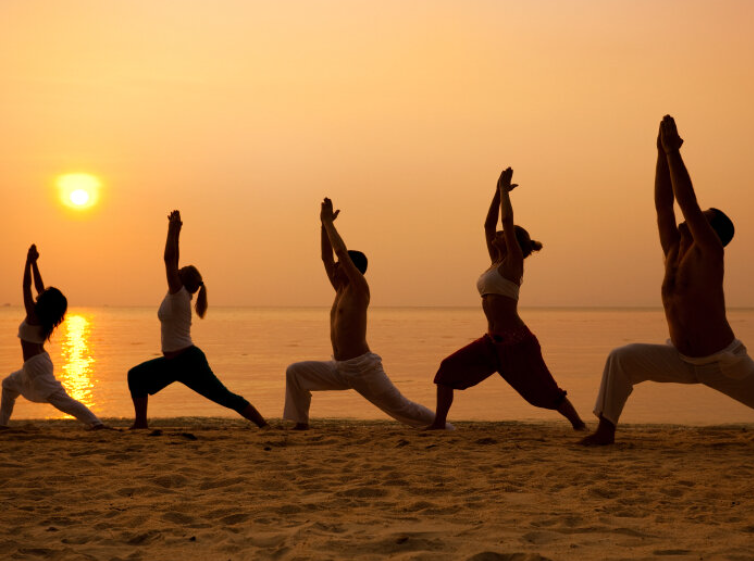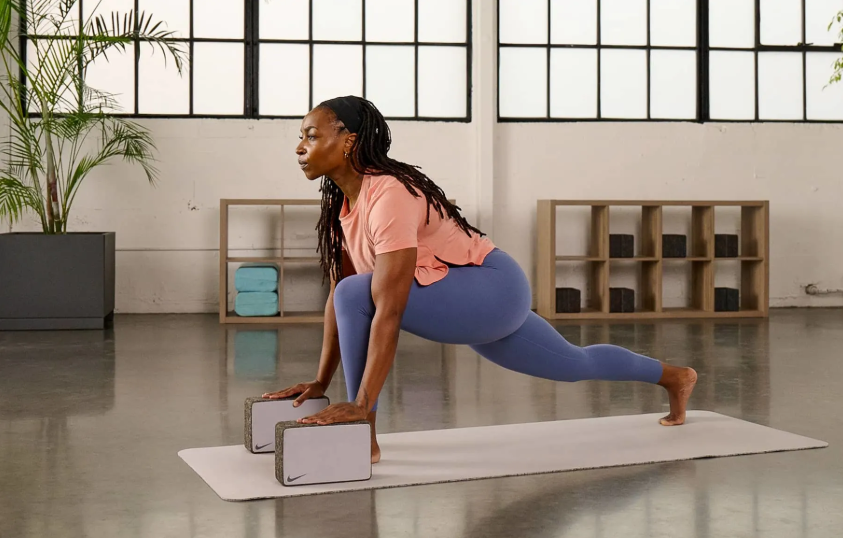Disclosure: This post may contain affiliate links. If you purchase through these links, we may earn a commission at no additional cost to you.
Welcome to the Compass: Orient Yourself
Yoga is a conversation between your body, your breath, and the stories you tell yourself. The Beginner's Compass offers a gentle structure so that conversation feels friendly. You will uncover what to practice, how to breathe, how to listen inside, and how to keep showing up when motivation flickers. Keep a notebook nearby. Consider scheduling micro-dates with yourself to revisit sections. This is your invitation to cultivate steadiness and self-trust.
Your starting line
Pick one five-minute practice from this guide today. Celebrate completion, not perfection. The Compass rewards consistency.
Navigation tips
Use the floating nav or the sticky TOC to jump between sections. The Glow Lab-style elements respond to your choices so you can design a custom ritual.
How to read
Every major benefit is paired with a Try-It-Now prompt, modifications, and reflective questions. Skim or linger depending on your energy.
Gentle reminder: Yoga is not a test you pass. It is a relationship you nurture. There is room for your wobble, your curiosity, and your need for rest.
Mindset First: Soothe the Inner Critic
Your mindset decides whether yoga feels supportive or punishing. Begin by noticing internal narratives. Do you whisper that you are not flexible enough? Do you assume you must sweat buckets for it to count? Let's replace these myths with compassionate truth.
Myth: “I’m not flexible, so I can’t do yoga.”
Reality: Flexibility is an outcome, not a prerequisite. Yoga invites joints to explore safe ranges and teaches the nervous system to trust new shapes. Start with bent knees, stacked props, and breath-led motion. Your strength, awareness, and mobility will evolve organically.
Try it now: Stand with feet hip-width, bend your knees, hinge forward, and rest forearms on thighs. Breathe deeply for 60 seconds. You just practiced forward fold in a nervous-system-aware way.
Myth: “I need fancy gear.”
A mat is helpful, but a firm rug, two pillows, a blanket, and a sturdy chair cover 90% of the practices here. Consider gear upgrades later if you enjoy them. Curiosity is the only must-have.
Beginner Mindset Anchors
- Permission slips: “I can pause. I can modify. I can rest.” Repeat them aloud before every session.
- Micro-metrics: Track how you feel after practice rather than how you look during it. Use the Daily Check-In later in this guide.
- Beginner’s curiosity: Swap “Am I doing this right?” for “What sensation am I noticing?”
Pose Library: 12 Essentials with Real-Life Translation
These foundational shapes create a vocabulary for your practice. Each card includes setup, key sensations, everyday benefits, and variations. Spend time here before chasing complex flows. When in doubt, slow down.
Mountain Pose (Tadasana)
Set up: Stand tall, feet hip-width, soften knees, lengthen crown of head.
Feel for: Even weight in both feet, steady breath.
IRL benefit: Better posture while sitting at your desk.
Modify: Practice with your back against a wall.
Cat-Cow (Marjaryasana-Bitilasana)
Set up: Hands under shoulders, knees under hips. Inhale to arch, exhale to round.
Feel for: Spine articulation, gentle warmth.
IRL benefit: Reduces stiffness after long computer sessions.
Modify: Do it seated in a chair if wrists are tender.
Low Lunge (Anjaneyasana)
Set up: Step right foot forward, left knee down. Sink hips gently.
Feel for: Hip flexor stretch, lifted chest.
IRL benefit: Eases tightness from sitting.
Modify: Place forearms on thighs or blocks.
Child’s Pose (Balasana)
Set up: Kneel, big toes together, knees wide, fold forward.
Feel for: Safety, breath expanding your back.
IRL benefit: Calms nervous system before sleep.
Modify: Stack pillows under chest and head.
Downward Dog (Adho Mukha Svanasana)
Set up: From hands and knees, lift hips, bend knees generously.
Feel for: Long spine, relaxed neck.
IRL benefit: Builds upper body strength.
Modify: Place hands on wall for an L-shape variation.
Warrior II (Virabhadrasana II)
Set up: Feet wide, front toes forward, back foot angled. Bend front knee.
Feel for: Inner thigh engagement, long spine.
IRL benefit: Boosts stability when hiking stairs or carrying groceries.
Modify: Shorten stance, rest forearm on thigh.
Tree Pose (Vrksasana)
Set up: Stand tall, place sole of one foot on ankle or calf, hands at heart.
Feel for: Balanced breath, steady gaze.
IRL benefit: Improves balance and confidence.
Modify: Touch fingertips to a wall.
Bridge Pose (Setu Bandha Sarvangasana)
Set up: Lie on back, knees bent, feet hip-width. Lift hips on inhale.
Feel for: Glute engagement, chest opening.
IRL benefit: Strengthens posterior chain, supports lower back.
Modify: Place block under sacrum for support.
Supine Twist
Set up: Lie on back, hug knees, drop them to one side, extend arms.
Feel for: Gentle spinal release, relaxed shoulders.
IRL benefit: Aids digestion and eases nighttime anxiety.
Modify: Place pillows between knees.
Seated Forward Fold (Paschimottanasana)
Set up: Sit tall, legs extended, hinge from hips.
Feel for: Back-body stretch, calm mind.
IRL benefit: Encourages patience and introspection.
Modify: Bend knees or sit on a folded blanket.
Sphinx Pose
Set up: Lie on belly, forearms on mat, chest lifted.
Feel for: Front-body stretch, gentle backbend.
IRL benefit: Counteracts slouching.
Modify: Place blanket under elbows.
Savasana (Corpse Pose)
Set up: Lie on back, legs relaxed, arms at sides, palms up.
Feel for: Grounded heaviness, slow breath.
IRL benefit: Integrates practice, trains rest.
Modify: Support knees with pillows.
Your First Sequences: Choose the Time You Have
Pick a sequence that matches your schedule and energy. Each includes pose order, breath cues, and journaling prompts. Rotate them during the 4-week plan to stay engaged.
5-Min Grounder 15-Min Confidence Builder 30-Min Beginner Flow
Grounder (5 minutes)
- Mountain Pose check-in (45 seconds): Notice weight distribution.
- Cat-Cow (2 minutes): Move with breath, eyes closed for last three cycles.
- Child’s Pose (90 seconds): Whisper a permission slip.
- Seated breath (45 seconds): Inhale four counts, exhale six.
Journal prompt: “What softened?”
Confidence Builder (15 minutes)
- Warm-up: Cat-Cow, Sphinx, Child’s Pose (5 minutes)
- Standing flow: Mountain → Forward Fold → Half Lift → Low Lunge → Warrior II (7 minutes)
- Cool down: Supine Twist, Bridge, Savasana (3 minutes)
Breath cue: Emphasize exhale to release tension.
Reflection: “Where did I feel steady? Where did I wobble? What did wobble teach me?”
Beginner Flow (30 minutes)
- Arrival: Seated breathing with shoulder rolls (3 minutes)
- Warm-up: Cat-Cow, Thread the Needle, Downward Dog variations (7 minutes)
- Standing series: Warrior II → Reverse Warrior → Triangle → Tree (10 minutes)
- Floor series: Low Lunge quad stretch, Bridge with block, Supine Twist (6 minutes)
- Integration: Guided Savasana with mantra “I am learning” (4 minutes)
Tip: Play gentle music, journal afterward.
Breathing Lab: Coach Your Calm
Breath is your anchor. Choose the pattern that matches your current mood. The lab will cue a practice, a body focus, and a reinforcing mantra. Explore all six to build a versatile toolkit.
Box Breath Balloon Belly Humming Exhale Ocean Breath Sun Breath Moon Breath
Select a breath style
Readiness Quiz: What Support Do You Need Today?
Answer three quick prompts. We will recommend a practice and a mantra to carry through your day. This quiz saves to your browser so you can track patterns.
1. How does your energy feel?
Low and heavy Steady but sluggish High but scattered
2. What do you crave most?
Calm Focus Confidence
3. How much time do you have?
5 minutes 15 minutes 30 minutes
Daily Check-In Tracker
Use the sliders before or after practice. Observe how breath and movement influence your state. Scores save in your browser for seven days.
Energy 5/10
Mood 5/10
Stress 5/10
Sleep quality 5/10
Four-Week Beginner Path
The Compass timeline scales slowly so your body adapts. Repeat weeks if needed. Note how your tracking scores shift.
Week 1: Orientation
Alternate the 5-Min Grounder and 15-Min Confidence Builder. Breath focus: Balloon Belly. Reflection: “What surprised me?”
Week 2: Foundations
Add Beginner Flow once. Practice Tree Pose daily while brushing your teeth. Share a win with a friend.
Week 3: Exploration
Try all breath lab options. Introduce journaling after each session. Note emotional shifts, not just physical ones.
Week 4: Integration
Mix sequences, revisit myths, and write a letter to your future self celebrating effort. Plan your next month based on your own data.
Notes from New Yogi Friends
Eva, 42, Project Manager
“I kept waiting to feel ‘ready.’ This guide nudged me to begin. The Readiness Quiz became my morning ritual. When it suggested the 5-minute Grounder on a hectic day, I actually listened—and the rest of the day softened.”
Malik, 28, Student
“I thought yoga meant intense flexibility. The pose cards taught me that bent knees are not cheating. I printed them and taped them near my mat.”
Rosa, 57, Nurse
“Night shifts wrecked my sleep. The Moon Breath option quietly saved me. Serious gratitude for whoever wrote ‘rest is productive.’”
Frequently Asked Questions
How often should beginners practice?
Start with three sessions per week. Mix short and medium practices. Schedule them like important appointments.
Is soreness normal?
Mild soreness is normal as muscles awaken. Intense pain is not. Add rest, foam rolling, or lighter sessions if needed.
Can I practice with injuries?
Consult a healthcare professional. Share limitations with instructors. Modify liberally—chair yoga and props are powerful.
How soon will I see benefits?
Many notice calmer breath and better sleep within two weeks. Strength and flexibility build by week four. Track your own signals.
Resources & Next Steps
- Printable pose cards: Download the 12-pose deck for easy reference.
- Audio breath library: Access five-minute guided recordings for each breath pattern.
- Community circle: Join monthly newcomer calls to ask questions, swap wins, and stay accountable.
Your practice is a living experiment. Keep iterating. Keep noticing. Every breath counts.
Share the Compass
Know someone who wants to try yoga but feels intimidated? Pass along this guide.
Topics:
HealthHub Team
Wellness expert and certified instructor sharing evidence-based health tips and practical fitness advice to help you live your healthiest life.



